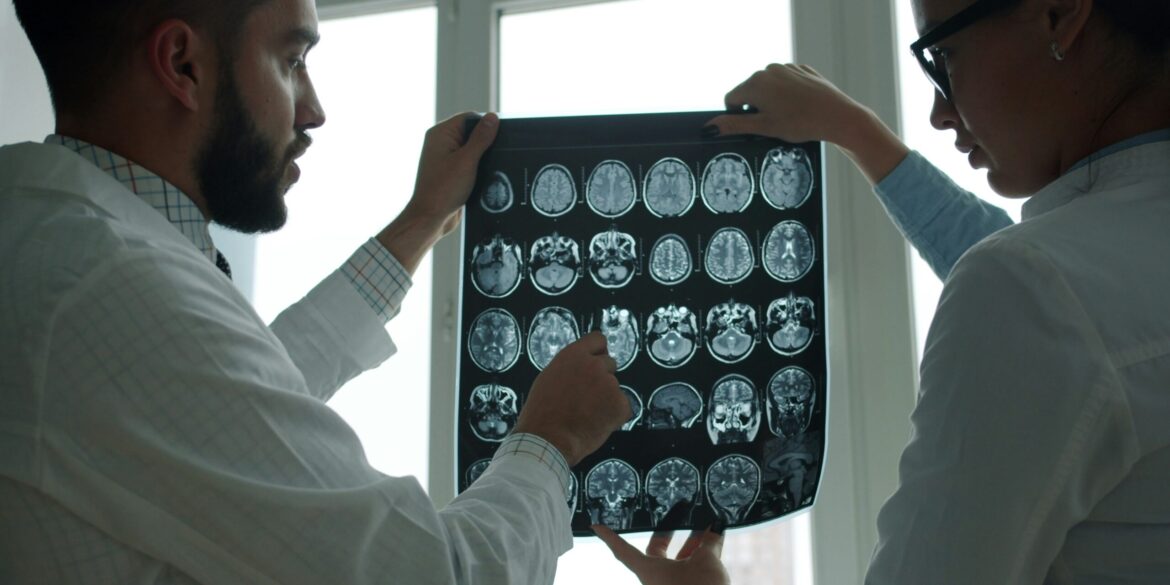In a groundbreaking discovery that could reshape stroke treatment, U.S. researchers have reported compelling evidence that DMT — N,N-dimethyltryptamine, a naturally occurring compound found in several plants and in trace amounts in the human brain — may dramatically reduce brain damage when administered shortly after the onset of ischemic stroke. The findings, released on October 7, 2025, mark a significant step toward developing next-generation neuroprotective therapies capable of complementing or enhancing existing medical interventions.
The large-scale randomized clinical trial, conducted across multiple research hospitals and involving over 3,500 patients, demonstrated that DMT improved neurological and functional recovery outcomes. Participants who received controlled, low-dose infusions of DMT within three hours of stroke onset exhibited notably smaller brain lesion sizes, reduced inflammatory markers, and improved blood vessel repair compared to those who received standard treatment alone. These early results point toward DMT’s potential to activate molecular pathways that promote neuroplasticity — the brain’s ability to reorganize and form new connections — while minimizing cell death in affected regions.
The study’s authors describe the findings as both promising and preliminary. “What we are seeing is a potential paradigm shift in how we approach acute stroke care,” said lead investigator Dr. Elena Mora, a neurologist at the National Center for Neurovascular Research. “DMT appears to trigger regenerative and protective processes in the brain, possibly through its action on serotonin receptors and intracellular signaling systems associated with neurogenesis and vascular repair. The fact that this occurs without significant adverse psychological effects in the controlled setting is particularly encouraging.”
Read Also: https://goodmorningus.com/study-finds-junk-food-can-impair-memory-in-just-four-days/
The implications are significant. Stroke remains one of the leading causes of disability and death worldwide, affecting nearly 800,000 Americans each year. Ischemic strokes, which occur when a blood clot blocks or narrows an artery supplying blood to the brain, account for about 85% of all cases. The current standard treatments — including clot-dissolving drugs like tissue plasminogen activator (tPA) and mechanical thrombectomy — are highly time-sensitive and primarily focus on restoring blood flow rather than protecting or repairing damaged tissue. A therapy that could protect neurons and stimulate repair mechanisms even after reperfusion could dramatically expand the window for effective intervention and improve long-term recovery.
Researchers say that DMT’s unique pharmacological profile may make it particularly suitable for this role. While best known as a potent psychedelic compound found in plants such as ayahuasca’s Psychotria viridis, DMT is also naturally synthesized in small amounts in the human body. At high doses, it can induce intense visual and emotional experiences, but at low, sub-psychedelic doses — such as those used in the stroke trial — it appears to activate signaling pathways involved in cell survival and repair without triggering hallucinations or other psychoactive effects.
Preclinical studies in animal models had previously hinted at these neuroprotective benefits. Laboratory data suggested that DMT can reduce inflammation, support mitochondrial function, and encourage angiogenesis — the growth of new blood vessels — all of which are crucial for recovery after a stroke. The new human trial represents the first large-scale clinical validation of those early observations.
Still, experts caution that more research is needed before DMT could become part of routine clinical care. “This is an exciting development, but we must move carefully,” said Dr. Samuel Rhodes, a stroke specialist at Johns Hopkins University who was not involved in the study. “The psychoactive nature of DMT raises regulatory and ethical questions that must be addressed, especially around dosing, administration, and patient monitoring. Large-scale replication studies and long-term safety assessments are essential before we can consider integrating this into hospital protocols.”
The team behind the study is already preparing for Phase III clinical trials, which will test DMT’s efficacy across broader patient populations and diverse healthcare settings. Researchers are also investigating whether the compound could be beneficial in other neurological injuries, such as traumatic brain injury (TBI) or cardiac arrest-induced hypoxia, where oxygen deprivation leads to similar patterns of neural damage.
Pharmaceutical companies and biotech startups have taken notice. Several firms specializing in psychedelic-based therapeutics — an area that has gained scientific legitimacy over the past decade — are exploring DMT analogs designed to deliver neuroprotective effects without hallucinogenic properties. If successful, these efforts could lead to the development of a new class of drugs capable of repairing the brain in ways previously thought impossible.
Beyond its clinical promise, the DMT study underscores a broader shift in medical science’s approach to neuropsychiatric and neurodegenerative conditions. Once stigmatized due to their association with psychedelic experiences, compounds like DMT, psilocybin, and LSD are being reexamined for their therapeutic potential in tightly controlled, evidence-based contexts. The emerging field of “psychedelic medicine” — particularly at low or microdosed levels — is rapidly evolving from fringe research to mainstream biomedical innovation.
For stroke patients and their families, this line of inquiry offers new hope. While prevention remains the most effective strategy, having an emergency treatment that not only limits damage but also promotes recovery could be life-changing. The potential to reduce long-term disability and improve quality of life — especially given the narrow time window for existing interventions — would represent a major leap forward in neurology.
Though the scientific community stresses that these findings are not yet definitive, the initial results suggest that DMT, long associated with spiritual and psychedelic experiences, may hold untapped potential as a powerful neuroprotective agent. If future trials confirm its safety and efficacy, this could mark the beginning of a transformative era in stroke medicine — one where healing the brain is not only about restoring blood flow, but also about awakening the body’s own regenerative capacity.
In a field where innovation has often moved slowly, this discovery offers a glimpse of what may be possible when science reexamines old compounds through a modern lens. For now, researchers remain cautious but hopeful, as the boundaries between neuroscience, pharmacology, and consciousness research continue to blur — and the human brain reveals yet another layer of its remarkable resilience.

